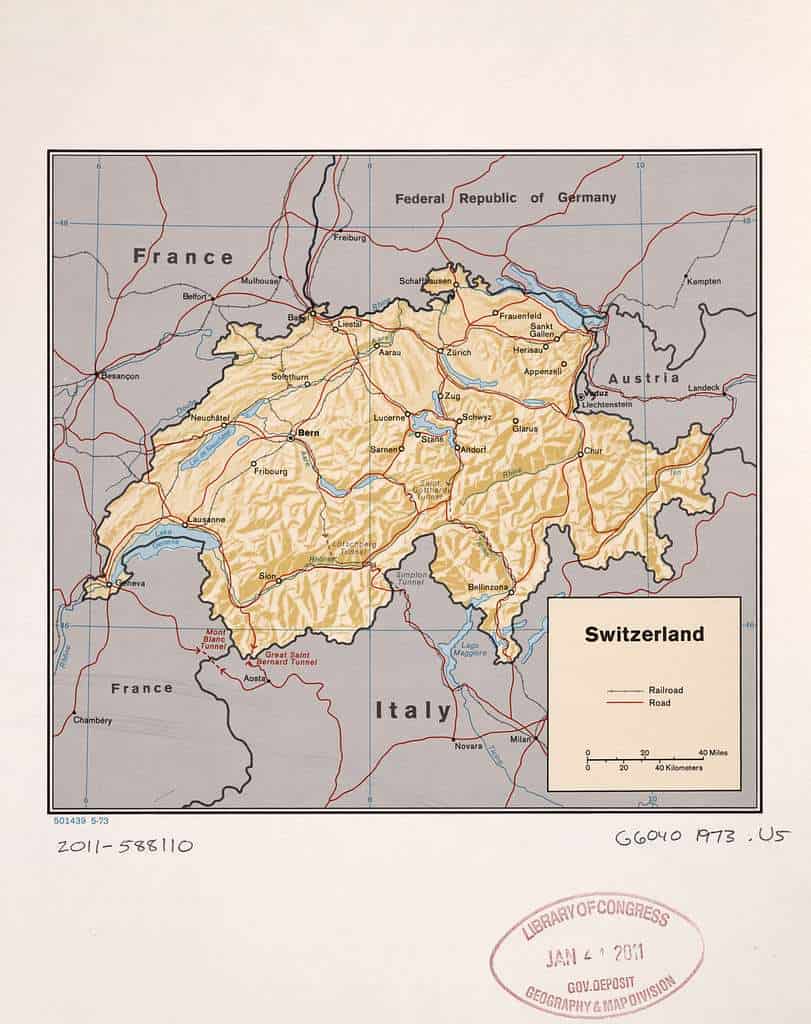When driving around Europe, you may notice cars with a CH sticker or see Swiss-based websites ending in ‘.ch’. The international registration code and currency abbreviation for Switzerland, CHF, also utilize these letters. So, why is Switzerland identified as CH? Contrary to popular misconceptions about cheese or chocolate, CH stands for Confoederatio Helvetica, the Latin name for Switzerland. This Latin term is used to avoid favoring any one of the four Swiss national languages. You’ll commonly find the CH abbreviation on Swiss cars, particularly when traveling internationally, and in Swiss internet addresses as the domain extension for Swiss websites.
What does Helvetica mean?
The term Helvetic originates from the Helvetii, a Celtic tribe that lived in the Swiss Plateau in ancient times. When Rome conquered the region in the 1st century BC, it became the Roman province of Helvetia. By 1291, when the Swiss Confederation formed, Helvetica was a long-forgotten name.

In 1798, French armies renamed Switzerland the Helvetic Republic, aiming to create a grand European empire with historic roots. The Swiss opposed centralized authority, so the Helvetic Republic was abolished in 1803, reverting to a confederation. However, the Swiss liked the name Helvetic Confederation, and when a new federal state and constitution were established in 1848, they retained the name Confœderatio Helvetica. This unifying, historical name in a dead language is still one of Switzerland’s nine official names today.
Switzerland’s Many Names
With four national languages, Switzerland has four official names: Schweizerische Eidgenossenschaft (German), Confédération Suisse (French), Confederazione Svizzera (Italian), and Confederaziun Svizra (Romansch). There are also four popular abbreviations: Schweiz, Suisse, Svizzera, and Svizra, making a total of nine proper names. Interestingly, “Switzerland” is the Anglicized version, not among these names.

The abbreviation “CH” appears on motor vehicles, internet addresses, and more. Switzerland’s Latin name, Confoederatio Helvetica, ensures no official language is favored, maintaining a neutral, international label for the country code.
Swiss Postal Codes
The CH abbreviation also plays a role in Swiss postal codes, where it is used as a prefix to denote the country. For example, a postal code might appear as “CH-1234,” with “CH” representing Switzerland and “1234” being the specific postal code for a particular region or locality. This usage of the abbreviation helps to easily identify Swiss addresses in international mail.
Swiss Coins with the Helvetia
The CH also appears in the abbreviation of the Swiss franc, namely as CHF.

A fascinating nod to Switzerland’s Helvetic history can be found on Swiss coins. Each coin features the figure of Helvetica, encircled by a multitude of stars representing the Swiss cantons in the Confederation.

What has the Helvetica Font to do with it
The Helvetica font shares a connection with Switzerland through its name and origin. Helvetica was developed in 1957 by Swiss typeface designer Max Miedinger with input from Eduard Hoffmann. The font was initially called Neue Haas Grotesk but was later renamed Helvetica, derived from “Helvetia,” the Latin name for Switzerland. The new name was chosen to reflect its Swiss heritage and make it more marketable internationally.

Today, Helvetica is one of the most widely used sans-serif typefaces worldwide, known for its clean, modern, and neutral design.
You might also like the following article:
Final Thoughts
The CH abbreviation has become an essential element in representing Switzerland’s diverse and multilingual identity. With its presence in various domains such as vehicle registrations, internet addresses, postal codes, and even the popular Helvetica font, the CH abbreviation has truly woven itself into the fabric of Swiss culture. As we unravel the story behind this unique abbreviation, we not only gain a better understanding of Switzerland’s rich history but also appreciate the nation’s commitment to linguistic and cultural balance.
